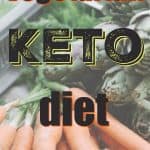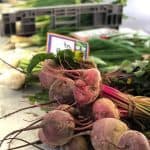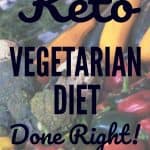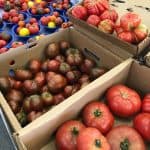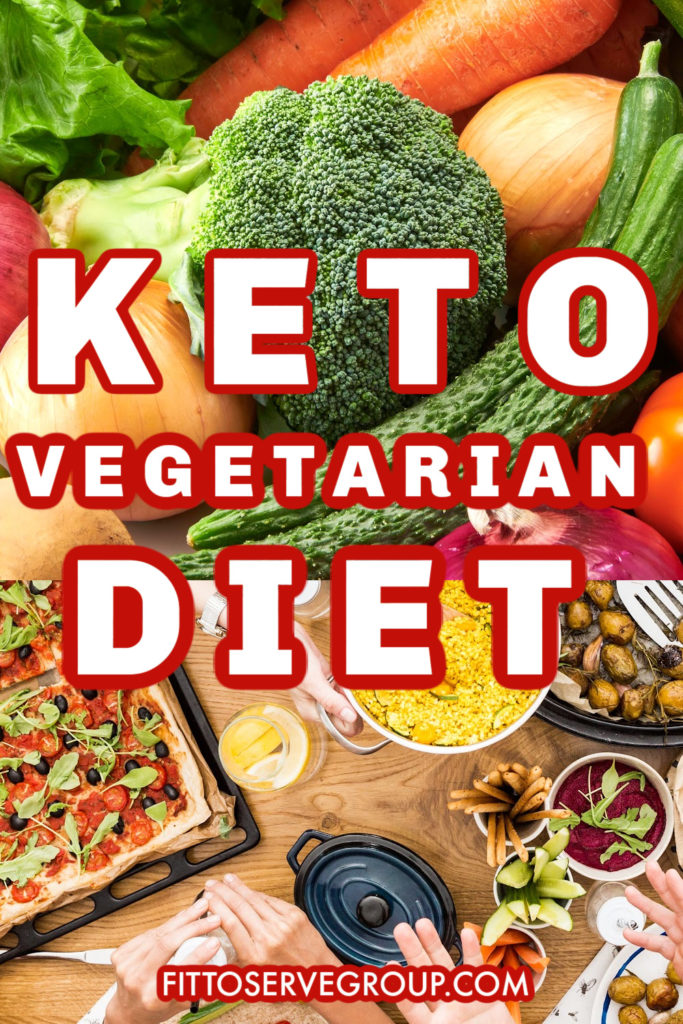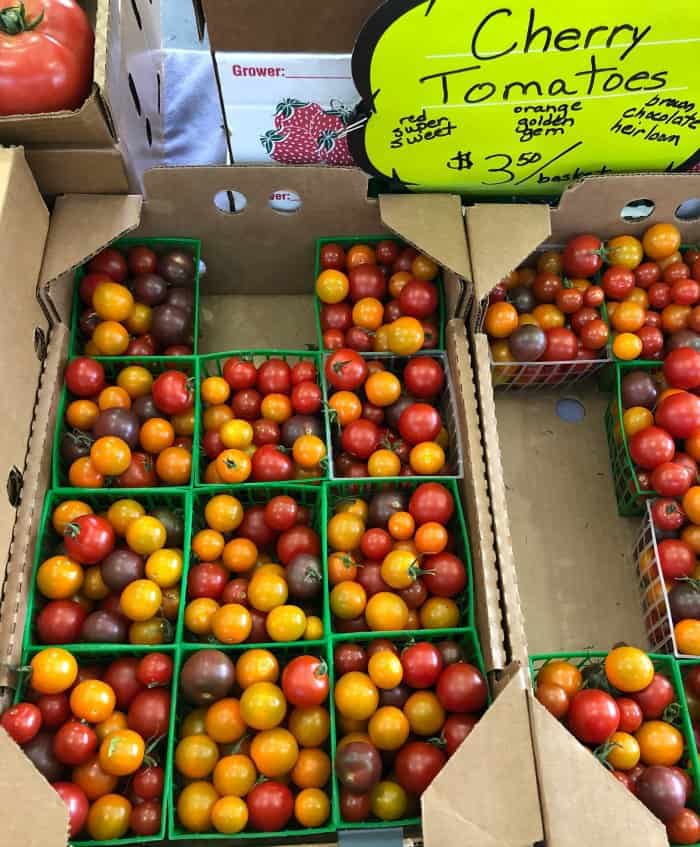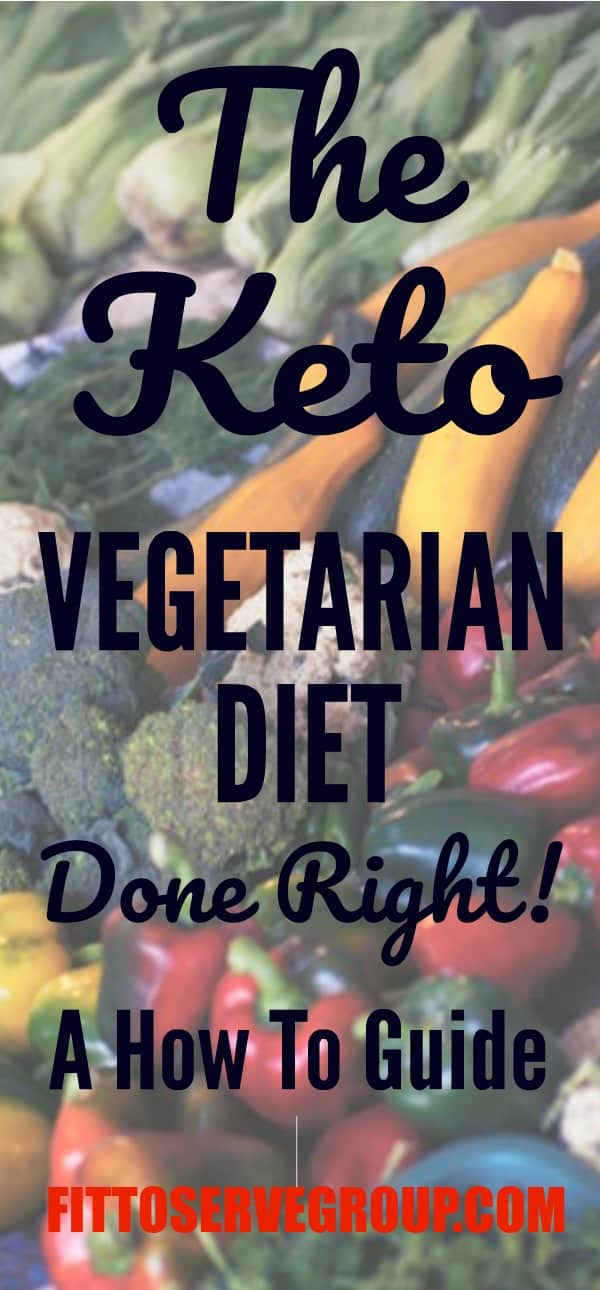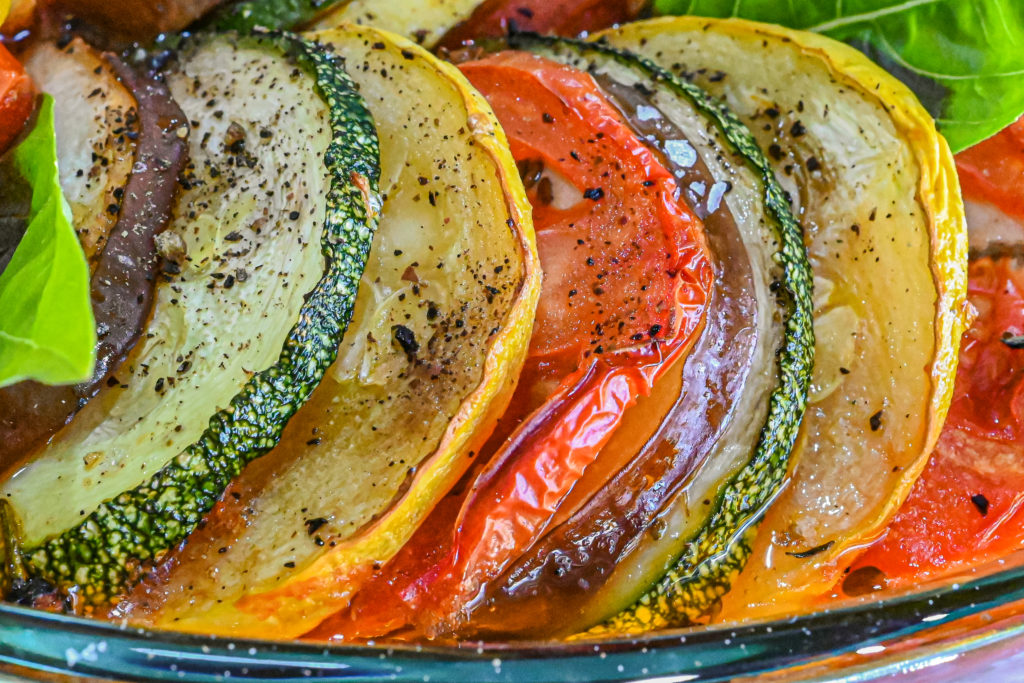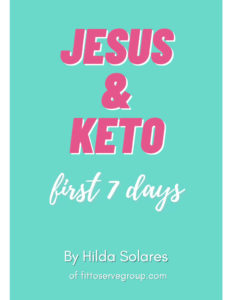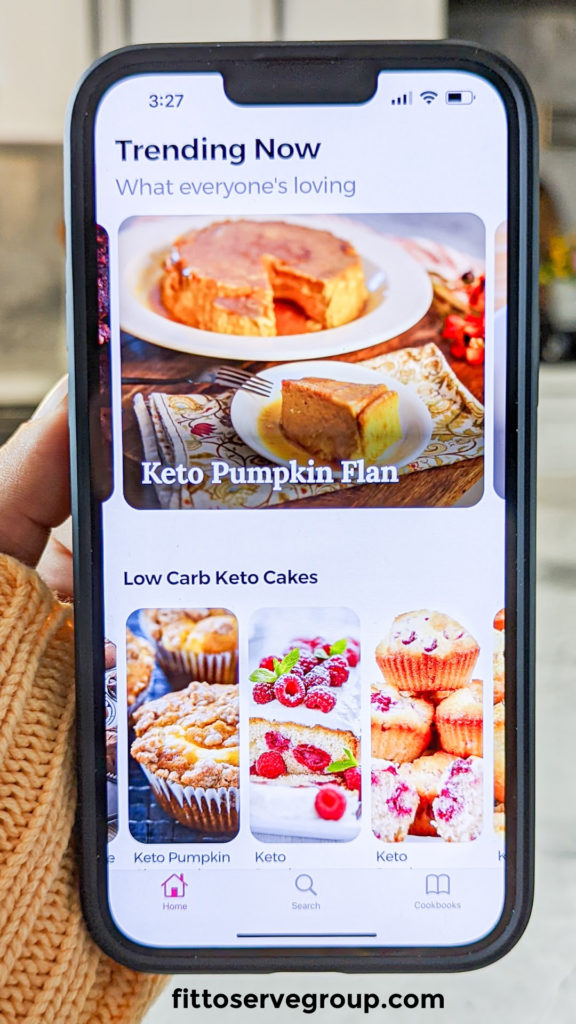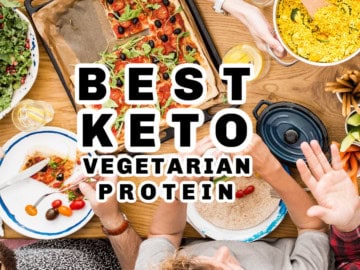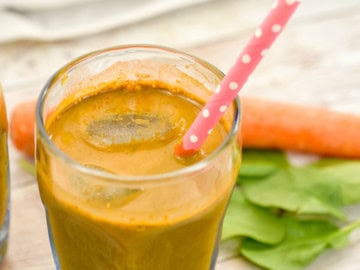My how-to guide for successfully implementing a vegetarian keto diet is a great resource for anyone wanting to do the keto diet as a vegetarian. It includes a list of foods for both vegetarians and vegans who want to do keto.
Can vegetarians do the keto diet? If so, can they do it successfully without nutrition gaps? It's a valid question and one that needs to be addressed.
At first glance, the keto diet may seem like it's only for a meat-only audience, but the boundaries have begun to change as vegetarians, and even vegans have started to embrace a vegetarian keto diet as an option.
Doing a vegetarian keto diet may sound strange at first. But the ketogenic diet is taking the world by storm and doesn’t seem to be letting go anytime soon.
Because the keto diet is a healthy and easy path to weight loss and excellent health, it makes sense to try to combine it with vegetarian principles for a vegetarian keto diet option.
I also encourage you to read the 7 Best Keto Vegetarian Protein Sources for more details on how to get started.
Visit our Vegetarian Keto Recipes for our complete list of recipes that are low in carbs and vegetarian-friendly.
Vegetarian Keto Diet
Disclosure: Some of the links below are affiliate links, meaning, at no additional cost to you, I will earn a commission if you click through and make a purchase.
We already know that the vegetarian diet is also very popular for weight loss and improving health markers. Many celebrities and influencers follow it, and you must have some friends who do, too.
While this is true, what about vegetarian keto? Is it even possible to follow a ketogenic diet as a vegetarian?
So, the short answer is yes, you can be a vegetarian and do a keto diet. It does require careful meal planning and proper macro tracking for ketone testing.
Still, if you’re devoted to trying the ketogenic diet as a vegetarian, you’ll easily find yourself on a path toward a healthier lifestyle and weight loss.
Depending on the type of vegetarianism you practice will determine the foods you will be permitted to eat while doing keto.
- Octo-lacto vegetarians are permitted to eat both dairy and eggs
- Octo vegetarians choose to consume eggs but not dairy
- Lacto vegetarians are allowed to consume dairy but not eggs
- Vegans consume no animal products or by-products and exclude both eggs and dairy. They also abstain from honey.
What Is A Vegetarian Keto Diet?
The term vegetarian keto diet seems quite strange and maybe even conflicting. After all, a typical ketogenic diet is heavily based on animal products. But, with a little effort and an excellent vegetarian keto food list, you can easily combine the benefits of both diets.
A vegetarian keto diet is a diet without any meat, but it allows dairy products and eggs. It combines vegetarianism with a keto lifestyle. In the case of a keto diet, foods are quite low in carbs and high in healthy fats, with a moderate amount of protein.
The goal of the diet is to induce the metabolic process of ketosis. When the body produces ketones, it begins to burn fat for fuel. It is an effective way to lose weight, especially body fat.
The vegetarian diet typically involves cutting out all beef, poultry, and fish entirely from your diet.
There are some claims that vegetarians also eat fish and seafood.
However, a diet that includes seafood is typically called pescatarian. A true vegetarian diet excludes any meat, fish, or seafood.
In the case of a keto vegetarian diet, non-meat foods are also low in carbs and high in fat.
What Are The Benefits Of A Vegetarian Keto Diet?
Practicing vegetarianism has proven beneficial for preventing common diseases. Several studies confirm its benefits.
However, the fact that it's easy to lean heavily on high-carb foods such as pasta and grains can undercut some of the health aspects of this diet.
Too many carbs can cause our insulin levels to spike and cause inflammation, all of which can lead to insulin resistance and type 2 diabetes.
In contrast, a diet rich in vegetables yet low in carbohydrates can reap the benefits of both vegetarianism and ketosis.
What Is A Keto Diet?
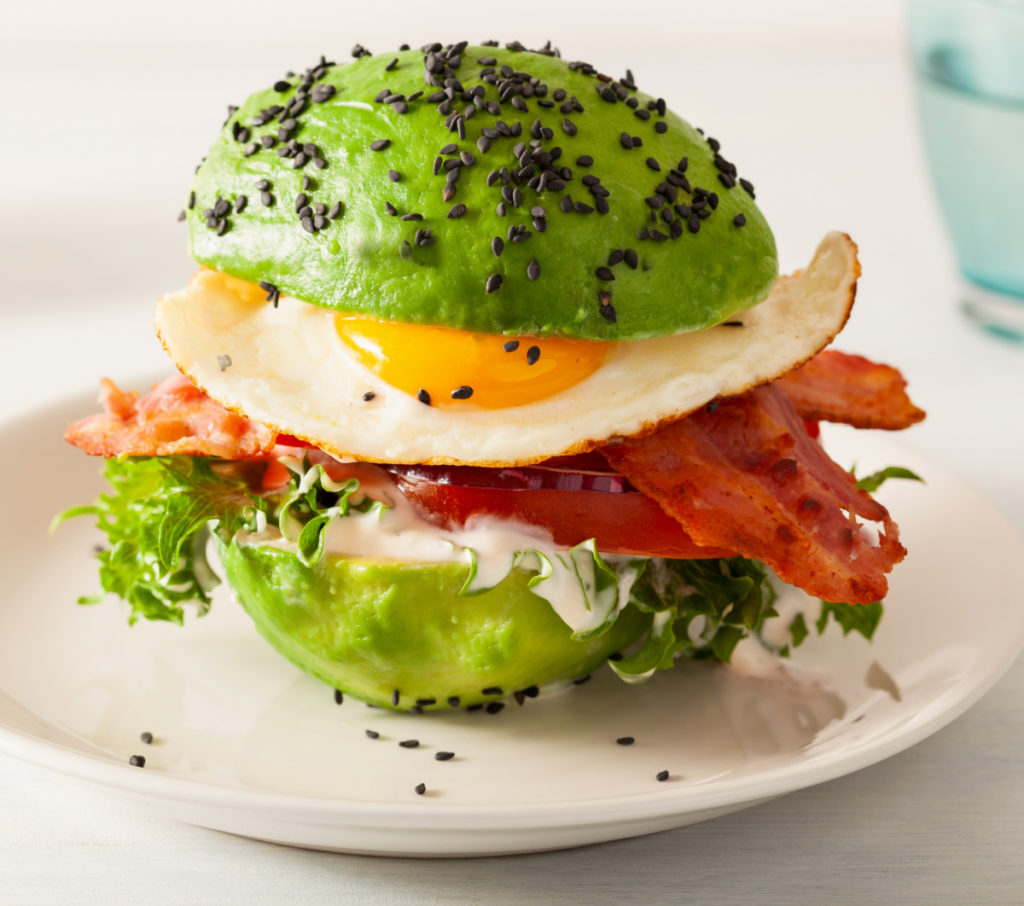
The ketogenic diet is a high-fat, low-carb diet. By minimizing the number of carbs, you force your body to break down fats for energy instead of carbs.
Traditionally, a ketogenic diet is thought to contain less than 50 grams of carbohydrates per day or 5 to 10 percent of total daily calories.
A keto diet can have an intake of as high as 85 percent of dietary fat. Another way of saying it is that it’s a diet that has four times more fat than carbs, with protein levels managed so that 90 percent of calories come from fat.
A ketogenic diet lowers carbohydrates and raises fats intending to produce ketones, fat for fuel.
When our bodies burn fat for fuel, we produce three bi-products of fat breakdown: β-hydroxybutyrate (BHB), acetoacetate (ACA), and acetone. These by-products are called ketones.
On a ketogenic diet, the body looks for alternative fuel in the absence of glucose. It turns to fatty acids and fat stores to provide energy. This will also be the case with a vegetarian keto diet as long as the carb intake remains low.
In contrast, when we consume foods that are high in carbs, the body produces higher levels of glucose and insulin. This explains why most people run on glucose fuel.
The problem is that whatever excess glucose is not used by the body gets stored as excess fat. But when the body is deprived of glucose, fats are used for energy production.
Furthermore, when the fatty acid breaks down in the liver, it turns into ketone bodies. The body then uses these ketones as fuel in a process called ketosis.
Some Benefits Of Ketosis
- Increased energy
- Appetite suppression
- Better fat loss or weight loss
- Better physical performance (ketone energy outlasts glucose energy)
- Greater mental clarity (brain fog is lifted)
- Less inflammation (ketones are anti-inflammatory)
- Better sleep
A Summary Of The Vegetarian Keto Diet
Although a vegetarian keto diet excludes meat and fish, a person wanting to do a vegetarian version of keto can do so by consuming high amounts of fat, adequate amounts of low-carb plant-based protein, and keeping total carbs low.
Maybe it's true that most vegetarians tend to substitute meat for foods higher in carbs. However, you’ll have to eliminate them if your goal is to enter and stay in a state of ketosis.
For a more thorough shopping list, look below, but in short, stay away from:
- Sugar (including natural forms like maple, honey agave syrup…)
- Potatoes, yams…(also limit the number of underground vegetables)
- Beans and legumes (lentils, peas…)
- Fruit (oranges, bananas…) (stick with berries instead)
- Grains (corn, cereal, wheat…)
Can Vegans Do A Keto Diet?
The vegetarian keto diet has many more options when choosing different sources of fat and protein than vegans.
Because a vegan excludes all animal-based products entirely from their diet, it is sometimes more difficult to get all the essential amino acids your body needs.
The good news is that it is possible to do a plant-based diet (vegan diet) on keto.
However, it will be more challenging because it's harder to find protein substitutes that are not animal-based and low in carbs. That said, it is still doable.
Vegetarian Keto Diet Food List
Here’s a vegetarian keto diet grocery list of all the foods you can have as a vegetarian. While it is not a complete list, it can still give you an approximate idea of what you should include in your shopping list.
You'll quickly see that a low-carb eating plan is totally possible for a vegetarian, and you can gain all the health benefits, as well as blood sugar control.
Best Oils
- Extra virgin olive oil
- Coconut oil
- Red palm oil
- Avocado oil
- MCT oil
- Cocoa butter
- Macadamia oil
In the case of vegetarians, they can also use animal-based fats such as grass-fed butter and ghee.
Vegetarian & Vegan Keto Protein Options

- Firm tofu (calcium sulfate)
- Tofu (Nigari hard)
- Silken firm tofu
- Tofu (silken soft)
- Coconut yogurt
- Coconut cream
- Coconut flour
- Pumpkin seeds
- Pumpkin flour
- Almonds
- Almond flour/meal
- Macadamia nuts
- Flax seeds
- Flax flour/meal
- Chia seeds
- Hazelnuts
- Hazelnut meal/flour
- Seitan
- Natto
- Spirulina
- Hemp seeds
- Nutritional yeast
There are many different protein sources to choose from on the vegetarian keto diet. Have a look at the vegetarian protein guide, but you can efficiently use tempeh, tofu, and other vegan meat substitutes as long as they are low in carbs.
Egg And Dairy
Keto vegetarians can include eggs and dairy in their protein list. If you are doing keto as a vegan, you need to avoid this section. Choose from the protein list above instead.
Would you like to save this?
When it comes to dairy, pick high-quality, sustainable, grass-fed animal products whenever possible.
- Kefir
- Full-fat yogurt
- Full-fat cream cheeses
- Ghee
- Grass-fed butter
- Heavy whipping cream
- Organic eggs
- Hard cheeses
- Soft cheeses
- Protein powders that contain whey or casein
If yogurt isn’t to your liking, try substituting it for coconut yogurt. Or yogurt made with coconut cream. You can also use other alternatives to dairy, such as unsweetened almond, coconut, and cashew milk.
Keto-Friendly Vegetables
Vegetables are an essential part of the keto vegetarian diet. However, depending on their sugar content, some vegetables can be higher in carbs.
For this reason, choosing your vegetables wisely is key, as is keeping an eye out for portions, as the carb count can quickly add up.
It's best to stick with above-ground vegetables, mainly leafy greens.
- Artichokes
- Spinach
- Collard greens
- Edamame
- Fennel
- Kelp
- Broccoli
- Broccoli Raab
- Bean sprouts
- Cauliflower
- Cabbage
- Brussel sprouts
- Beet greens
- Bok choy
- Bamboo shoots
- Okra
- Turnips
- Alfalfa sprouts
- Swiss chard
- Watercress
- Nopales
- Radishes
- Zucchini
- Arugula
- Kohlrabi
- Celery
- Lettuce
- Asparagus
- Carrots (small amounts)
- Mushrooms
- Eggplant
- Onions
- Peppers
- Pumpkin
- Rutabaga
- Leek
- Ginger
- Green beans ( small amounts)
- Tomatoes (small amounts)
- Cucumbers
- Mustard greens
- Kale
- Avocado
- Green olives
There are many more veggie options; you can be sure you won’t deprive yourself of vegetables on the keto vegetarian diet.
When it comes to fruit, however, you need to pay a bit more attention. Avoid all fruits that are high in sugar. This is because even natural fructose sugar can inhibit weight loss.
The most recommended and popular choice of fruits on the keto diet is berries.
Keto Fruits
- Raspberries
- Strawberries
- Blueberries
- Blackberries
- Rhubarb
- Prickly pear
- Grapefruit (small amount)
- Coconut
Supplements
Disclosure: Some of the links below are affiliate links, meaning that at no additional cost to you, I will earn a commission if you click through and make a purchase.
Anything from low-carb protein powders to milk-based and plant-based supplements can be included in the vegetarian keto diet as long as you keep an eye on the number of carbs per serving.
I recommend the following protein powders since they are both low in carbs and vegetarian-friendly:
Isopure Zero Carb Keto-Friendly Protein Powder
Perfect Keto Grass Fed Collagen With MCT
Vegans will have to stick with a plant-based protein supplement.
Sweeteners
Feel free to sweeten your smoothies, shakes, and desserts with low-carb sweeteners, such as:
- Stevia
- Monk fruit
- Erythritol (Swerve)
- Allulose
Avoid The Classic Vegetarian Mistake
One thing to keep in mind when starting the vegetarian keto diet is that you can’t survive on salads and cheese alone.
You'll need to plan your meals carefully, perhaps even stack up on some extra supplements, minerals, and vitamins.
A lot of amateur and beginner vegetarians fail because when they exclude animal protein from their diet, they don’t replace them with other necessary protein-rich foods.
Instead, they load up on empty carbs like pizza, cookies, pasta, sandwiches, and other high carbs "carbage."
One thing is sure: you’ll fail miserably in your healthy lifestyle quest and weight loss goal without a proper meal plan and a keto shopping list.
You can't fool yourself into thinking you are eating a healthy "vegetarian" diet if it's loaded with bad carbs.
The vegetarian keto diet involves avoiding bad carbs and embracing more good carbs, such as vegetables.
Good Carbs Versus Bad Carbs
So, since your vegetarian keto diet choices might contain more sources of carbs than an animal-based keto diet, let’s clarify the right carbs to choose and the bad carbs you need to avoid.
Bad carbs are generally processed. Although, when it comes to the keto diet, foods that are too high in carbs should also be avoided.
This will sometimes include both processed and unprocessed foods. Some consider foods such as brown rice, whole-wheat pasta, and quinoa healthy, but they should be avoided.
This is because when we consume foods that are high in carbohydrates, they cause an insulin spike, which also raises our hunger hormones.
If weight loss and ketosis are the goals, then all foods that are too high in carbs should be avoided.
Examples Of Bad Carbs
- Rice
- Pasta
- Potatoes, yams
- Fruit sugars
- Chips and tortillas
- Bread
- Grain-based cereals
Examples Of Good Carbs
Good carbs are high in fiber and nutrients. They are usually not processed (or only slightly) and are primarily those found in vegetables.
They don’t cause the same spike in blood sugar levels as bad carbs. According to studies (linked to diabetes and coronary heart disease), they improve digestion and metabolic health and even lower the risk of illness.
Some of the good carbs include seeds, nuts, and leafy green vegetables.
Vegetarian Keto Diet Tips
Some tips to consider when on a vegetarian keto diet:
- This diet doesn’t contain any animal meat (beef, pork, chicken, fish, and seafood), but feel free to use high-quality dairy products and eggs if lacto-vegetarian) Ovo-vegetarian will need to stick to plant-based proteins that are low in carbs.
- As a general rule, get at least 70% of calories from fat, 20% from protein, and the rest from carbs.
- Ideally, stick to 30-40 grams of carbs a day if you want to get into ketosis and stay in it.
- Lower the intake of high-carb foods, even those previously thought as healthy.
- Increase your consumption of low-carb vegetables.
- Supplement vegetarian keto protein powders if you think you’re not getting enough protein.
- High-quality and healthy fats play a significant role; don’t substitute oils and other fats for low and inferior-quality sources.
- Don’t base your meals on vegan meat substitutes only; try to eat as much real food as possible for mineral and vitamin intake.
- Limit soy use. Soy is high in goitrogens, and these can inhibit the thyroid's function and the ability to use iodine correctly. Too much soy can lead to hypothyroid issues.
- Add fermented foods (kimchi, natto, sauerkraut) to your diet to improve digestion.
- Use a keto calculator to get an idea of how much protein, fat, and carbs you should consume for your ideal weight goal.
In conclusion, vegetarians can also utilize the keto diet for its many benefits. Therefore, with a little more careful planning and tracking, both vegetarians and vegans can participate in the ketogenic diet.
You might want to visit this site for a full vegetarian keto guide
We encourage you to pin our post and share it with your friends and family members who want to do a keto diet while also adhering to a vegetarian lifestyle.
Join Our Jesus And Keto Movement
Looking for an online support system to help you stay the course on keto? As a family, we came to the keto diet, looking at it from a Christian perspective. As believers, we live our lives supported by God's grace.
So when the Holy Spirit led us to combine our Christian faith and the keto diet, we did so in hopes of finding lasting transformation. When we followed the Holy Spirit's prompting, we got on the path to real transformation.
Knowing firsthand the benefits of this decision, we have created a closed Christian group that is using the keto diet to transform their lives.
We invite you to join our Private Facebook Group and see if it's not the key you have been missing.
Be sure to request our FREE Jesus and Keto E-Book (First 7 Days). We hope it blesses you.
Fittoservegroup Keto App
Looking for a fast way to access our keto recipes? We've got you covered. There's an app for that. Yup, there's a Fit To Serve Group App, and it's going to make your keto diet a delicious breeze!
Access hundreds of recipes that are all sugar-free, gluten-free, and keto-friendly.
Enjoy early access to recipes before they go live on the website. Plus, bonus recipes that are exclusive to the app. Make your own personal cookbooks that you can use to organize your favorite recipes.
Search recipes by title, ingredients, keywords, and categories, and of course, every recipe shows complete nutritional facts. Get the Fit to Serve Group App for easy-to-follow keto recipes made with easy-to-source ingredients.
The app is loaded with hundreds of yummy recipes for breakfast, lunch, dinner, snacks, and even desserts!
Learn more by visiting our Fit To Serve Group App Page.

